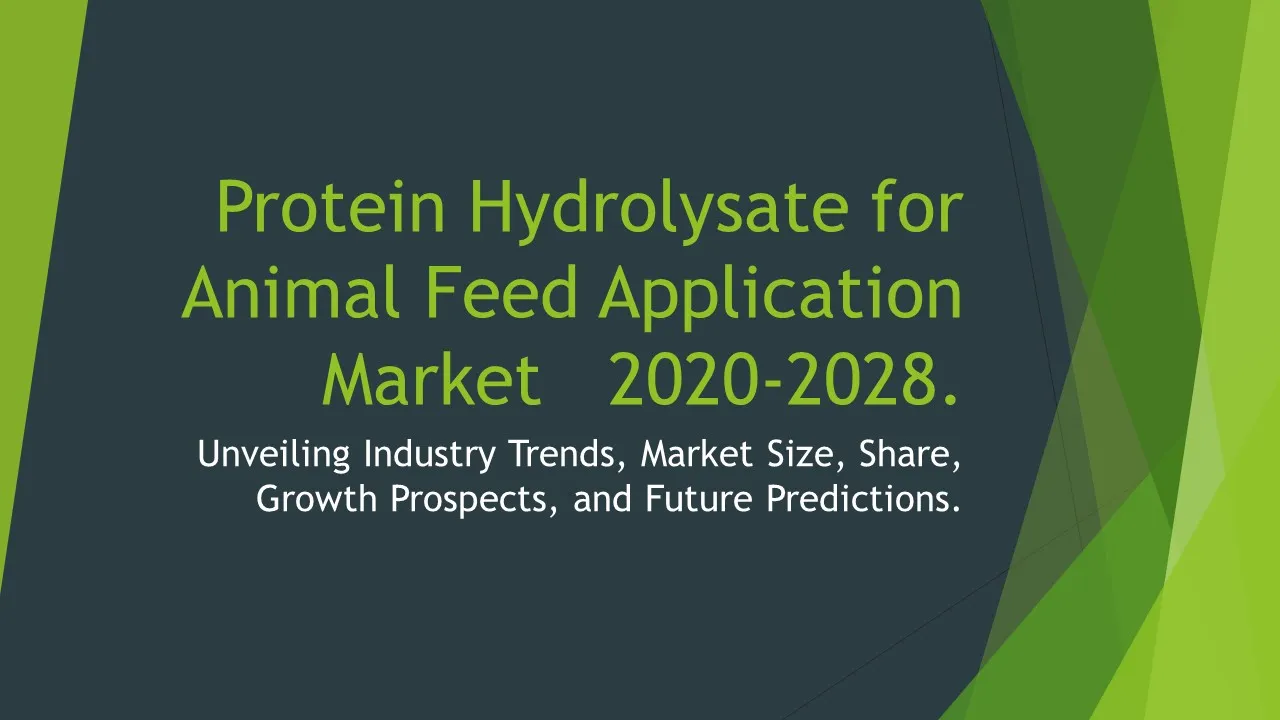Forage Inoculants
Forage Inoculants Market Segments - by Product Type (Bacterial Inoculants, Fungal Inoculants, Combination Inoculants, Other Inoculants), Application (Silage, Haylage, Pasture, Other Applications), Distribution Channel (Direct Sales, Distributor Sales), Ingredient Type (Lactic Acid Bacteria, Pediococcus, Enterococcus, Bacillus, Other Ingredients), and Region (North America, Europe, Asia Pacific, Latin America, Middle East & Africa) - Global Industry Analysis, Growth, Share, Size, Trends, and Forecast 2025-2035
- Report Preview
- Table Of Content
- Segments
- Methodology
Forage Inoculants Market Outlook
The global forage inoculants market is projected to reach USD 1.5 billion by 2035, with a compound annual growth rate (CAGR) of 6.5% during the forecast period from 2025 to 2035. The growth of this market is primarily driven by the increasing demand for high-quality livestock feed, as well as the rising awareness of the benefits of using inoculants to improve forage quality and yield. Additionally, the growing trend of precision agriculture and the need for sustainable farming practices have led to an increased adoption of forage inoculants among farmers. Innovations in microbial biotechnology are also enhancing the effectiveness of these products, thereby expanding their application in various farming scenarios. Furthermore, the surge in meat and dairy consumption due to the rising global population is further propelling the forage inoculants market.
Growth Factor of the Market
One of the significant growth factors contributing to the forage inoculants market is the increasing focus on enhancing the nutritional quality and digestibility of animal feed. Farmers are increasingly adopting forage inoculants as they effectively boost the fermentation process during silage preparation, ensuring better preservation and nutrient retention. Another factor is the rising demand for organic and natural farming practices, which promotes the use of microbial inoculants to improve soil health and crop yields without the reliance on chemical fertilizers. Moreover, the growing livestock industry, spurred by the demand for meat and dairy products, is expected to drive the need for high-quality forage, further fueling the market for forage inoculants. Technological advancements in microbial strains and formulations are also leading to more efficient and tailored products that meet specific agricultural needs, thus attracting more farmers to invest in inoculants. Additionally, government initiatives promoting sustainable agriculture practices are increasing the visibility and acceptance of forage inoculants among farmers globally.
Key Highlights of the Market
- Projected market growth to reach USD 1.5 billion by 2035.
- CAGR of 6.5% from 2025 to 2035.
- Increasing demand for high-quality livestock feed as a driving factor.
- Technological advancements enhancing the effectiveness of forage inoculants.
- Rising trend towards sustainable agriculture and organic farming practices.
By Product Type
Bacterial Inoculants:
Bacterial inoculants represent a significant segment of the forage inoculants market, as they are known for their ability to enhance fermentation and improve the preservation of silage. These inoculants primarily contain lactic acid bacteria, which play a crucial role in promoting anaerobic fermentation, thus reducing dry matter losses. By facilitating a rapid pH drop during fermentation, bacterial inoculants can ensure the stability of silage, leading to improved animal performance and enhanced digestibility. The increasing awareness among farmers of the benefits of bacterial inoculants, coupled with their proven efficacy in enhancing forage quality, is fueling the demand for this product type.
Fungal Inoculants:
Fungal inoculants are gaining traction in the forage inoculants market due to their unique properties that complement those of bacterial inoculants. These inoculants typically contain beneficial fungi that can improve the fermentation process and enhance the nutrient profile of forage. Fungal inoculants help in breaking down complex carbohydrates, aiding in the overall digestibility of forages for livestock. Their ability to promote the growth of beneficial microbial communities in the rumen has made them increasingly popular among farmers seeking to optimize animal health and productivity. As more research highlights the benefits of fungal inoculants, their adoption in forage management practices is expected to rise.
Combination Inoculants:
Combination inoculants, which blend both bacterial and fungal strains, are emerging as a preferred choice in the forage inoculants market. These inoculants leverage the strengths of both microbial types, leading to more effective fermentation processes and improved forage quality. By utilizing combination inoculants, farmers can achieve better nutrient retention and enhance the overall health of their livestock. Additionally, these products can provide synergistic effects that optimize the fermentation environment, further increasing their appeal. The growing recognition of the advantages of multi-strain inoculants is driving their adoption in various agricultural practices, making them a crucial segment in the forage inoculants market.
Other Inoculants:
Other inoculants encompass a wide range of microbial products that do not fall into the primary categories of bacterial, fungal, or combination inoculants. This category includes specialized products designed for specific applications or conditions, such as those tailored for particular forage types or environmental challenges. The versatility of these inoculants allows them to cater to niche markets and specific farmer needs, thus contributing to the overall growth of the forage inoculants market. As farmers increasingly seek customized solutions for their forage management practices, the demand for other inoculants is anticipated to rise.
By Application
Silage:
Silage application is one of the most significant segments within the forage inoculants market. The use of inoculants during the silage-making process enhances fermentation, resulting in improved preservation of nutrients and higher-quality feed for livestock. Silage made with inoculants exhibits reduced spoilage and dry matter loss, which is critical for maximizing the nutritional value of forage. The growing trend of using silage as a primary feed source in the dairy and beef industries is driving the demand for forage inoculants specifically designed for silage applications. As awareness of the advantages of using inoculants for silage production continues to grow, this segment is expected to expand significantly in the coming years.
Haylage:
Haylage, which is fermented hay, is another essential application segment for forage inoculants. The use of inoculants in haylage production helps to facilitate fermentation under anaerobic conditions, ensuring that nutrients are preserved and the feed remains stable over time. Farmers are increasingly recognizing the importance of inoculants in improving the quality of haylage, as they can mitigate the risks of spoilage and enhance the digestibility of the feed. With the growing popularity of haylage as a feed alternative, particularly in regions where traditional foraging may be limited, the market for forage inoculants in this application is anticipated to witness growth.
Pasture:
The pasture application segment involves the use of forage inoculants to enhance the quality and productivity of grazing lands. Inoculants can improve soil health, increase the availability of nutrients, and promote the growth of beneficial microbial populations in pastures. By enhancing pasture quality, farmers can improve the overall health and productivity of their livestock, leading to better yield outcomes. As the demand for sustainable farming practices and improved pasture management increases, the use of forage inoculants in pasture applications is expected to rise, contributing positively to the forage inoculants market.
Other Applications:
Other applications of forage inoculants encompass a range of uses outside traditional silage, haylage, and pasture scenarios. This segment may include applications in cover cropping, crop rotation, and soil amendment practices, where inoculants can play a role in enhancing soil health and overall agricultural productivity. As farmers increasingly adopt diverse practices to improve soil fertility and crop yield, the potential for forage inoculants in these applications is likely to expand. The versatility of these products in various farming scenarios positions them as crucial tools for modern agricultural practices, thus driving growth within this segment of the market.
By Distribution Channel
Direct Sales:
Direct sales represent a significant distribution channel for forage inoculants, allowing manufacturers to engage directly with end-users, such as farmers and agricultural cooperatives. This channel provides benefits such as personalized service, tailored recommendations, and efficient communication regarding product application and usage. Direct sales also facilitate better customer relationships, allowing manufacturers to gather feedback on product performance and improve their offerings. As farmers increasingly seek high-quality inoculants, the direct sales channel is expected to grow as manufacturers leverage this approach to better serve their customer base and enhance market reach.
Distributor Sales:
Distributor sales play a critical role in the forage inoculants market by connecting manufacturers with a broader network of retailers, agricultural supply stores, and farmers. Distributors often have established relationships within the agricultural community, allowing them to effectively promote and sell forage inoculants to a wider audience. This distribution channel enables manufacturers to scale their operations and extend their market presence without the need for extensive field sales teams. As the demand for forage inoculants grows, the distributor sales channel is expected to become increasingly vital in ensuring that products reach end-users efficiently.
By Ingredient Type
Lactic Acid Bacteria:
Lactic acid bacteria (LAB) are among the most commonly utilized ingredients in forage inoculants due to their essential role in silage fermentation. These beneficial bacteria promote the rapid production of lactic acid, which is crucial for lowering the pH during the fermentation process and preserving forage quality. LAB inoculants contribute to improved nutrient retention and can enhance the digestibility of silage for livestock. As the demand for high-quality feed increases, the market for lactic acid bacteria in forage inoculants is expected to witness significant growth, driven by their proven effectiveness in enhancing animal performance.
Pediococcus:
Pediococcus strains are another important ingredient type used in forage inoculants, particularly for their ability to inhibit spoilage organisms and enhance fermentation. These bacteria contribute to the overall stability of silage and promote a favorable fermentation environment, resulting in better preservation of nutrients. Farmers increasingly recognize the advantages of utilizing Pediococcus in their forage management practices as it helps improve the fermentation process and offers a competitive edge in livestock production. The growing emphasis on microbial solutions in agriculture is expected to bolster the market for Pediococcus-based inoculants.
Enterococcus:
Enterococcus species are valued components in the formulation of forage inoculants, known for their unique fermentation capabilities and resilience under various environmental conditions. They contribute to the overall quality of fermented forages by promoting lactic acid production and inhibiting the growth of harmful microorganisms. The use of Enterococcus in forage inoculants is on the rise, as farmers seek effective solutions to improve forage quality and animal health. As the global demand for high-quality livestock feed continues to escalate, the incorporation of Enterococcus in inoculant formulations is likely to drive market growth.
Bacillus:
Bacillus strains are increasingly being recognized for their potential in forage inoculants, offering benefits that extend beyond traditional fermentation processes. These beneficial bacteria can enhance nutrient availability, promote plant growth, and improve soil health, which is essential for sustainable agricultural practices. The versatility of Bacillus in various applications, including its ability to survive in challenging environmental conditions, makes it a valuable ingredient in forage inoculants. As farmers continue to adopt innovative solutions for forage management, the demand for Bacillus-based inoculants is expected to increase significantly.
Other Ingredients:
Other ingredients in forage inoculants may include various microbial strains and additives designed to enhance the performance of the primary inoculants. This category encompasses a range of specialized products that may target specific forage types or provide additional benefits, such as improved palatability or enhanced nutrient profiles. The increasing trend toward personalized agricultural solutions is driving demand for these unique formulations, as farmers seek tailored products that meet their specific needs. As research and development in microbial technology continue to evolve, the market for other ingredients in forage inoculants is expected to expand.
By Region
The North American region holds a prominent position in the global forage inoculants market, accounting for approximately 35% of the total market share. This dominance is attributed to the highly developed agricultural sector, with a strong emphasis on livestock production and dairy farming. The market in North America is expected to grow at a CAGR of 7% over the forecast period, driven by the increasing adoption of advanced farming practices and a growing awareness of the benefits of forage inoculants. The availability of a wide range of inoculant products tailored to various agricultural needs further supports the market growth in this region.
In Europe, the forage inoculants market is also experiencing significant growth, driven by the rising demand for sustainable agricultural practices and high-quality feed. The European market is estimated to account for approximately 25% of the global market share. The increasing focus on reducing environmental impacts and enhancing feed efficiency among livestock producers is propelling the demand for forage inoculants. As farmers in Europe continue to seek innovative solutions to improve their forage management, the market for forage inoculants is expected to witness steady growth over the coming years.
Opportunities
One of the major opportunities within the forage inoculants market is the increasing trend towards sustainable agriculture. Farmers are becoming more aware of the ecological impact of their practices and are seeking natural and effective solutions to enhance crop quality and livestock health. The development of advanced microbial technologies is paving the way for the creation of innovative inoculants that can cater to the specific needs of diverse agricultural environments. By focusing on sustainability and productivity, the forage inoculants market stands to benefit from the growing demand for environmentally friendly farming practices. Furthermore, the integration of precision agriculture techniques, such as monitoring soil health and crop performance, presents additional opportunities for the effective application of forage inoculants in optimizing forage production and enhancing overall profitability.
Additionally, emerging markets in regions such as Asia Pacific and Latin America present significant growth opportunities for the forage inoculants market. As these regions continue to modernize their agricultural practices and increase their livestock production, the need for high-quality feed and sustainable farming solutions will rise. Governments in these areas are also promoting initiatives aimed at improving agricultural productivity and food security, further supporting the growth of the forage inoculants market. Manufacturers can leverage these opportunities by aligning their product offerings with local agricultural needs and establishing strategic partnerships with local distributors and farmers to enhance market penetration and brand awareness.
Threats
Despite the promising outlook for the forage inoculants market, there are several threats that could impede its growth. One of the primary concerns is the increasing competition from alternative feed solutions and synthetic additives that may offer similar benefits at a lower cost. Farmers looking to optimize their feed strategies may opt for these alternatives, thereby limiting the market share of forage inoculants. Additionally, the fluctuating global supply chain and challenges related to the availability of raw materials can hinder production capabilities, leading to potential shortages and price fluctuations. Regulatory uncertainties related to the approval and use of microbial products in different regions may also pose challenges, as manufacturers must navigate complex compliance processes that can affect market entry and product availability.
Moreover, the potential for inconsistent product performance and variations in efficacy based on environmental conditions can adversely impact farmers' perception and acceptance of forage inoculants. Negative experiences with product effectiveness may lead to reluctance among farmers to invest in these solutions, hindering market growth. Manufacturers must address these concerns by ensuring product quality, conducting thorough research, and providing clear guidelines on usage to build trust and credibility among users. Additionally, ongoing education and awareness programs can help mitigate these threats by informing farmers about the benefits and proper application of forage inoculants.
Competitor Outlook
- Chr. Hansen
- Lallemand Inc.
- Cargill, Inc.
- Alltech
- Kemin Industries, Inc.
- Agri-King
- Biomin Holding GmbH
- Evonik Industries AG
- Novozymes A/S
- Sierra Biologicals
- Pioneer Hi-Bred International, Inc.
- Nutreco N.V.
- Provita Eurotech
- Keystone Bio-Ag
- Hokuriku Seiyaku
The competitive landscape of the forage inoculants market is characterized by a multitude of players, ranging from large multinational corporations to specialized regional manufacturers. Key companies such as Chr. Hansen and Lallemand Inc. are leading the market with their extensive product portfolios and robust research and development capabilities. These companies have established strong relationships with farmers and agricultural organizations, enabling them to promote their products effectively and gain market share. The emphasis on innovation and quality is driving competition, as companies strive to develop unique formulations that cater to the evolving needs of farmers and livestock producers.
Moreover, strategic partnerships and collaborations are becoming increasingly common in the forage inoculants market, as companies seek to expand their product offerings and enhance their distribution networks. For instance, collaborations between manufacturers and agricultural cooperatives can help facilitate the adoption of forage inoculants among farmers by providing educational resources and support for optimal product usage. Additionally, companies are investing in marketing and branding initiatives to differentiate their products in a crowded marketplace, leveraging digital platforms to reach a broader audience and engage with potential customers.
Leading players such as Cargill, Inc. and Alltech are also focusing on sustainability and environmental responsibility, developing forage inoculants that align with the principles of regenerative agriculture. These companies recognize the growing demand for eco-friendly solutions and are actively working to incorporate sustainable practices into their production processes. By aligning their product offerings with consumer preferences and market trends, these competitors are positioning themselves as leaders in the forage inoculants market, solidifying their market position and driving continued growth in the coming years.
1 Appendix
- 1.1 List of Tables
- 1.2 List of Figures
2 Introduction
- 2.1 Market Definition
- 2.2 Scope of the Report
- 2.3 Study Assumptions
- 2.4 Base Currency & Forecast Periods
3 Market Dynamics
- 3.1 Market Growth Factors
- 3.2 Economic & Global Events
- 3.3 Innovation Trends
- 3.4 Supply Chain Analysis
4 Consumer Behavior
- 4.1 Market Trends
- 4.2 Pricing Analysis
- 4.3 Buyer Insights
5 Key Player Profiles
- 5.1 Alltech
- 5.1.1 Business Overview
- 5.1.2 Products & Services
- 5.1.3 Financials
- 5.1.4 Recent Developments
- 5.1.5 SWOT Analysis
- 5.2 Agri-King
- 5.2.1 Business Overview
- 5.2.2 Products & Services
- 5.2.3 Financials
- 5.2.4 Recent Developments
- 5.2.5 SWOT Analysis
- 5.3 Chr. Hansen
- 5.3.1 Business Overview
- 5.3.2 Products & Services
- 5.3.3 Financials
- 5.3.4 Recent Developments
- 5.3.5 SWOT Analysis
- 5.4 Nutreco N.V.
- 5.4.1 Business Overview
- 5.4.2 Products & Services
- 5.4.3 Financials
- 5.4.4 Recent Developments
- 5.4.5 SWOT Analysis
- 5.5 Cargill, Inc.
- 5.5.1 Business Overview
- 5.5.2 Products & Services
- 5.5.3 Financials
- 5.5.4 Recent Developments
- 5.5.5 SWOT Analysis
- 5.6 Novozymes A/S
- 5.6.1 Business Overview
- 5.6.2 Products & Services
- 5.6.3 Financials
- 5.6.4 Recent Developments
- 5.6.5 SWOT Analysis
- 5.7 Lallemand Inc.
- 5.7.1 Business Overview
- 5.7.2 Products & Services
- 5.7.3 Financials
- 5.7.4 Recent Developments
- 5.7.5 SWOT Analysis
- 5.8 Keystone Bio-Ag
- 5.8.1 Business Overview
- 5.8.2 Products & Services
- 5.8.3 Financials
- 5.8.4 Recent Developments
- 5.8.5 SWOT Analysis
- 5.9 Hokuriku Seiyaku
- 5.9.1 Business Overview
- 5.9.2 Products & Services
- 5.9.3 Financials
- 5.9.4 Recent Developments
- 5.9.5 SWOT Analysis
- 5.10 Provita Eurotech
- 5.10.1 Business Overview
- 5.10.2 Products & Services
- 5.10.3 Financials
- 5.10.4 Recent Developments
- 5.10.5 SWOT Analysis
- 5.11 Sierra Biologicals
- 5.11.1 Business Overview
- 5.11.2 Products & Services
- 5.11.3 Financials
- 5.11.4 Recent Developments
- 5.11.5 SWOT Analysis
- 5.12 Biomin Holding GmbH
- 5.12.1 Business Overview
- 5.12.2 Products & Services
- 5.12.3 Financials
- 5.12.4 Recent Developments
- 5.12.5 SWOT Analysis
- 5.13 Evonik Industries AG
- 5.13.1 Business Overview
- 5.13.2 Products & Services
- 5.13.3 Financials
- 5.13.4 Recent Developments
- 5.13.5 SWOT Analysis
- 5.14 Kemin Industries, Inc.
- 5.14.1 Business Overview
- 5.14.2 Products & Services
- 5.14.3 Financials
- 5.14.4 Recent Developments
- 5.14.5 SWOT Analysis
- 5.15 Pioneer Hi-Bred International, Inc.
- 5.15.1 Business Overview
- 5.15.2 Products & Services
- 5.15.3 Financials
- 5.15.4 Recent Developments
- 5.15.5 SWOT Analysis
- 5.1 Alltech
6 Market Segmentation
- 6.1 Forage Inoculants Market, By Application
- 6.1.1 Silage
- 6.1.2 Haylage
- 6.1.3 Pasture
- 6.1.4 Other Applications
- 6.2 Forage Inoculants Market, By Product Type
- 6.2.1 Bacterial Inoculants
- 6.2.2 Fungal Inoculants
- 6.2.3 Combination Inoculants
- 6.2.4 Other Inoculants
- 6.3 Forage Inoculants Market, By Ingredient Type
- 6.3.1 Lactic Acid Bacteria
- 6.3.2 Pediococcus
- 6.3.3 Enterococcus
- 6.3.4 Bacillus
- 6.3.5 Other Ingredients
- 6.4 Forage Inoculants Market, By Distribution Channel
- 6.4.1 Direct Sales
- 6.4.2 Distributor Sales
- 6.1 Forage Inoculants Market, By Application
7 Competitive Analysis
- 7.1 Key Player Comparison
- 7.2 Market Share Analysis
- 7.3 Investment Trends
- 7.4 SWOT Analysis
8 Research Methodology
- 8.1 Analysis Design
- 8.2 Research Phases
- 8.3 Study Timeline
9 Future Market Outlook
- 9.1 Growth Forecast
- 9.2 Market Evolution
10 Geographical Overview
- 10.1 Europe - Market Analysis
- 10.1.1 By Country
- 10.1.1.1 UK
- 10.1.1.2 France
- 10.1.1.3 Germany
- 10.1.1.4 Spain
- 10.1.1.5 Italy
- 10.1.1 By Country
- 10.2 Asia Pacific - Market Analysis
- 10.2.1 By Country
- 10.2.1.1 India
- 10.2.1.2 China
- 10.2.1.3 Japan
- 10.2.1.4 South Korea
- 10.2.1 By Country
- 10.3 Latin America - Market Analysis
- 10.3.1 By Country
- 10.3.1.1 Brazil
- 10.3.1.2 Argentina
- 10.3.1.3 Mexico
- 10.3.1 By Country
- 10.4 North America - Market Analysis
- 10.4.1 By Country
- 10.4.1.1 USA
- 10.4.1.2 Canada
- 10.4.1 By Country
- 10.5 Forage Inoculants Market by Region
- 10.6 Middle East & Africa - Market Analysis
- 10.6.1 By Country
- 10.6.1.1 Middle East
- 10.6.1.2 Africa
- 10.6.1 By Country
- 10.1 Europe - Market Analysis
11 Global Economic Factors
- 11.1 Inflation Impact
- 11.2 Trade Policies
12 Technology & Innovation
- 12.1 Emerging Technologies
- 12.2 AI & Digital Trends
- 12.3 Patent Research
13 Investment & Market Growth
- 13.1 Funding Trends
- 13.2 Future Market Projections
14 Market Overview & Key Insights
- 14.1 Executive Summary
- 14.2 Key Trends
- 14.3 Market Challenges
- 14.4 Regulatory Landscape
Segments Analyzed in the Report
The global Forage Inoculants market is categorized based on
By Product Type
- Bacterial Inoculants
- Fungal Inoculants
- Combination Inoculants
- Other Inoculants
By Application
- Silage
- Haylage
- Pasture
- Other Applications
By Distribution Channel
- Direct Sales
- Distributor Sales
By Ingredient Type
- Lactic Acid Bacteria
- Pediococcus
- Enterococcus
- Bacillus
- Other Ingredients
By Region
- North America
- Europe
- Asia Pacific
- Latin America
- Middle East & Africa
Key Players
- Chr. Hansen
- Lallemand Inc.
- Cargill, Inc.
- Alltech
- Kemin Industries, Inc.
- Agri-King
- Biomin Holding GmbH
- Evonik Industries AG
- Novozymes A/S
- Sierra Biologicals
- Pioneer Hi-Bred International, Inc.
- Nutreco N.V.
- Provita Eurotech
- Keystone Bio-Ag
- Hokuriku Seiyaku
- Publish Date : Jan 20 ,2025
- Report ID : AG-654
- No. Of Pages : 100
- Format : |
- Ratings : 4.5 (110 Reviews)









